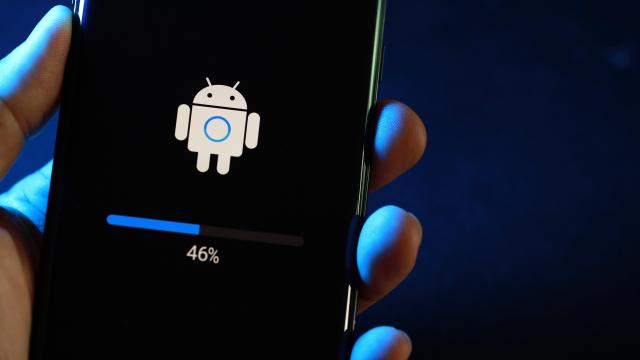Android 14 is here. Well, at least in beta form. Google dropped the first public beta for the upcoming Android update on Thursday, April 13, following two developer-only previews earlier this year. If you want to experience the new changes Google is bringing to Android, now you can.
Many of these features are for developers, so you won’t necessarily take advantage of them as an end-user. However, you may notice them appear in the apps and services you use now that the beta is live.
New back arrow and gesture
We covered Android 14’s new predictive back gesture when it was highlighted in Developer Preview 2, but now that it’s here in the public beta, more people will be able to experience it. With the predictive back gesture, you’ll now see a preview of which app or window you’ll be moving back to before you make the jump. While Android’s back button/gesture is a great feature, you often didn’t know 100% where you were going before the new preview.
Even better, the arrow is designed with Material You in mind, so they’ll match the colour scheme of your current wallpaper.
Developers can now upgrade the share sheet
In previous versions of Android, the share sheet (the menu that appears when you go to share something) would rank the apps and contacts you could share to in alphabetical order. But with Android 14, developers are now able to customise the share sheets to include unique actions applicable to their apps.
Developers could customise the share sheet in the past, but it required them to create their own version of the share sheet, rather than rely on Android’s built-in option.
Graphical enhancements
Developers can now take advantage of graphical enhancements in Android 14, now that paths are queryable and interpolatable. One of those benefits will be morphing effects, which will allow developers to implement animations that transform elements seamlessly.
Enhancements to per-app language preferences
Per-app language preferences are important. For those of us who are bilingual or multilingual, you don’t always want to use the same language across all apps. Android 14 makes it easy for developers to update their list of supported languages, hopefully inspiring more developers to support a wider variety of languages.
Android 14 limits visibility to disability-focused accessibility features
One of Android 14’s new privacy features is an “accessibilityDataSensitive” attribute for developers. That allows them to implement features in their apps to limit visibility of data to accessibility services, specifically when those services claim to aid those with disabilities. Google’s goal is to protect user data like personal information or plaintext passwords, as well as stop users from accidentally making drastic decisions, like inadvertently sending money or buying something they didn’t mean to.
It’s time for app testing
This first Android 14 beta is the time for developers to test their apps with the latest version of Google OS. While you might experience some glitches in some apps while running Android 14, over time you should start to see more optimised versions without issue.
Android 14 features we already knew about
As reported by Android Authority, there are a handful of additional user-facing features we already knew about from the earlier Developer Previews.
Android 14 is focused on accessibility, adding even larger fonts to the mix (up to 200%). The software also includes a new notification accessibility feature, which uses the camera flash, display flash, or both to light up whenever a new notification comes through.
We also see the return of “screen time since last full charge,” which shows you how much you’ve used your phone since you last charged to 100%. You won’t be able to install apps from Android 5.1 Lollipop API or older, but you can keep these apps on your device if they were installed prior to Android 14.
Google implemented an iOS-like permission for sharing select photos with an app, rather than all or none. Plus, you can now turn off PIN animations, which should help stop others from studying your PIN before stealing your phone.
Small changes should also increase battery life on your device without you having to do a thing.
How to install the Android 14 beta on your device
A warning: Beta software is software in testing, and you shouldn’t expect a stable experience when using it. As such, it’s not recommended to install beta software on your primary device, since there may be bugs or other issues that disrupt your ability to use your phone. If you do install the Android 14 beta, properly back up your device before going forward.
The easiest way to install Android 14 on your phone is to enroll it in the Android Beta program. Right now, that’s only available for compatible Pixel devices, including:
- Pixel 4a (5G)
- Pixel 5 and 5a
- Pixel 6 and 6 Pro
- Pixel 6a
- Pixel 7 and 7 Pro
If you have one of these devices, you can also flash or manually install an Android 14 system image. For all other devices, you can set up the Android Emulator to run Android 14. Google has instructions on its site here. If you already enrolled your device in the Android QPR program, it’ll automatically update to Android 14 beta 1.

Leave a Reply
You must be logged in to post a comment.